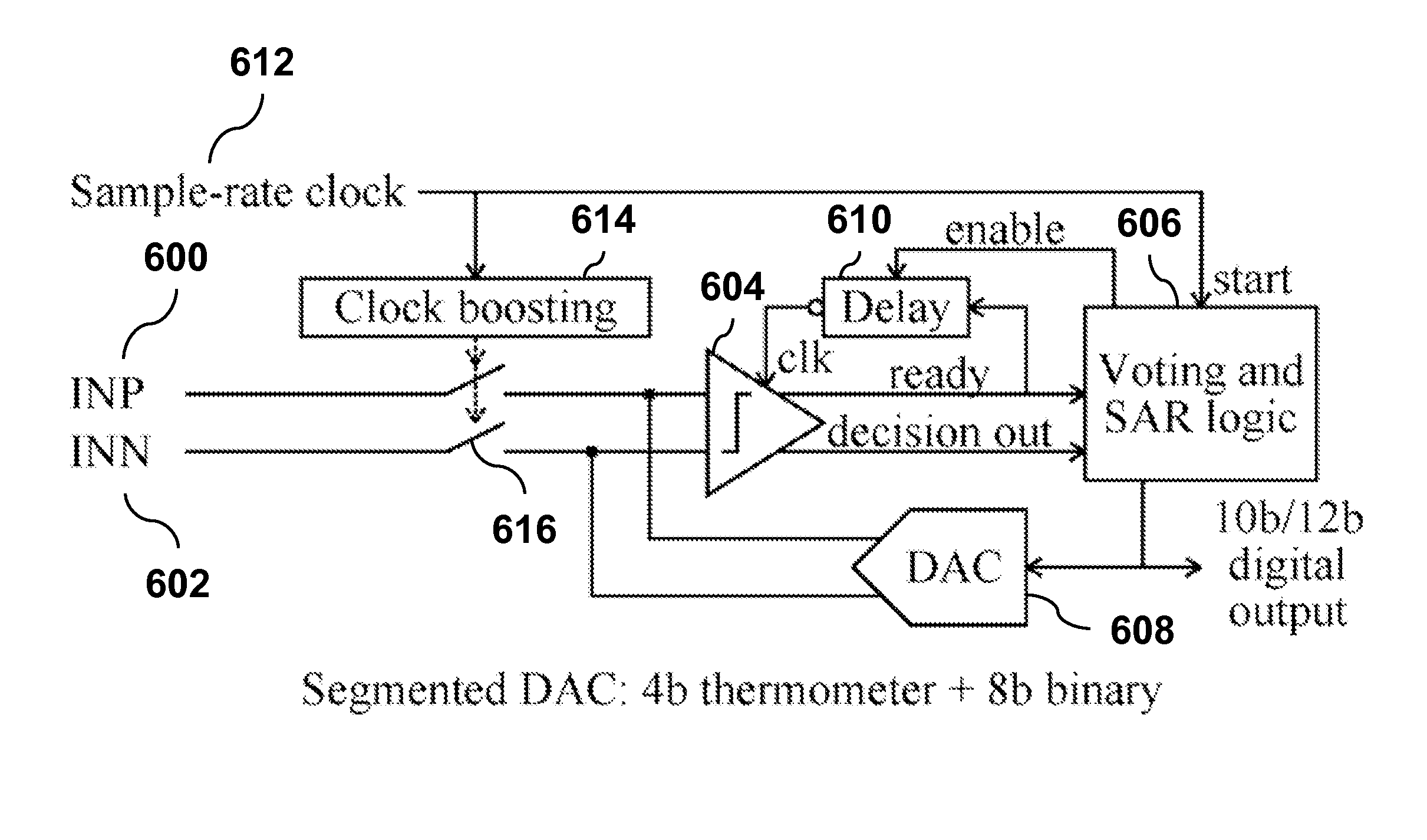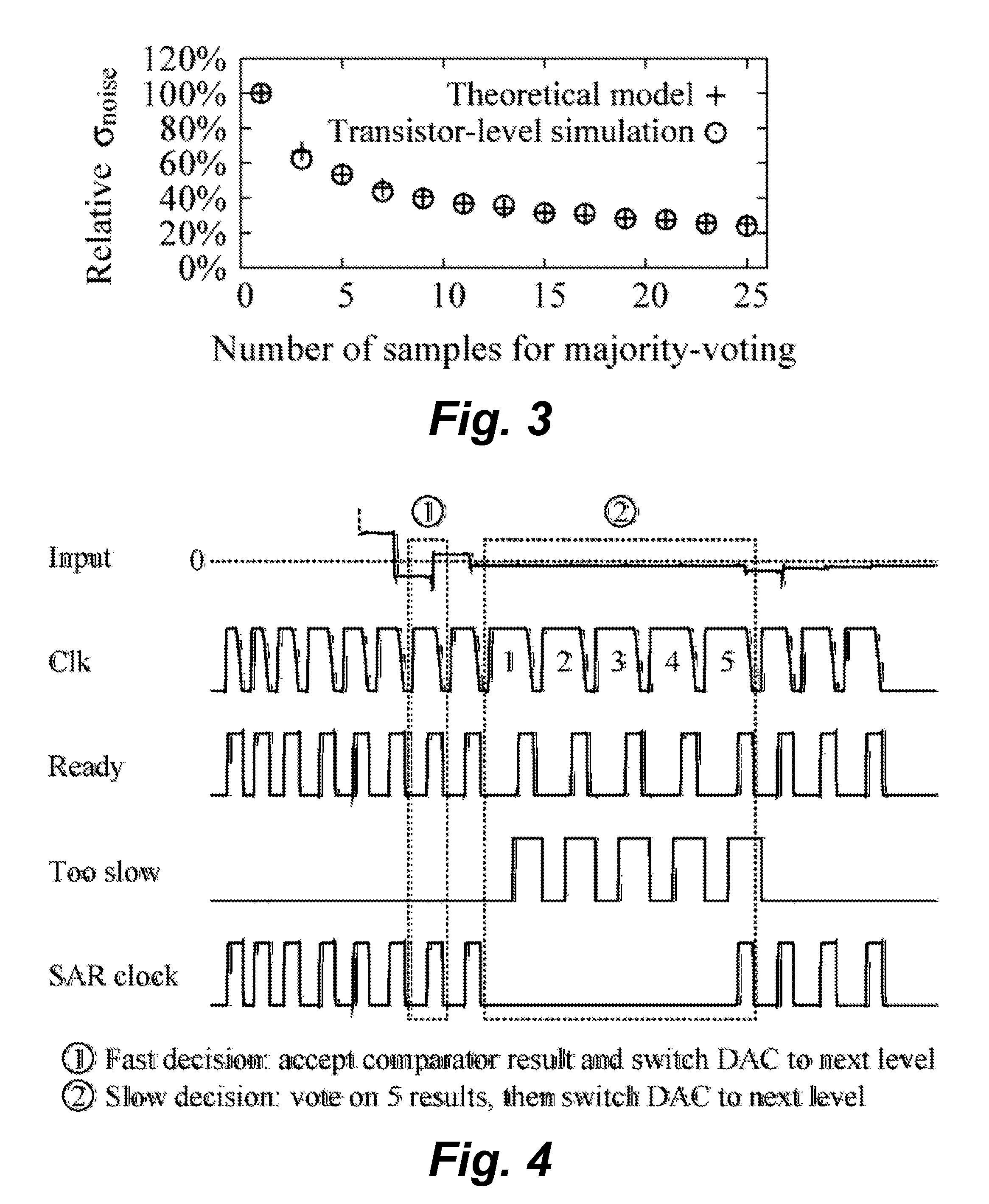Data-driven noise reduction technique for Analog to Digital Converters
- Summary
- Abstract
- Description
- Claims
- Application Information
AI Technical Summary
Benefits of technology
Problems solved by technology
Method used
Image
Examples
Embodiment Construction
[0024]It is difficult to maintain power-efficiency of SAR ADCs when extending the resolution beyond 10 bit because the power consumption of the analog components increases by a factor of 4 for each additional 6 dB of signal-to-noise-and-distortion ratio (SNDR) (equivalent to 1 bit gain in effective number of bits). Because the comparator usually dominates the power consumption, the present invention provides techniques that scale down the comparator noise in a much more power-efficient way as compared to the conventional approaches. Before this method is explained, a digital majority-voting technique is discussed as an alternative to analog scaling.
Majority Voting
[0025]A comparator with an input-referred noise with standard deviation σnoise has an output probability function, such as shown in FIG. 1A, where P0 denotes the probability of output 0 as function of the input voltage Vin and P1 denotes the probability of output 1 as function of the input voltage Vin. (A differential imple...
PUM
 Login to View More
Login to View More Abstract
Description
Claims
Application Information
 Login to View More
Login to View More - R&D
- Intellectual Property
- Life Sciences
- Materials
- Tech Scout
- Unparalleled Data Quality
- Higher Quality Content
- 60% Fewer Hallucinations
Browse by: Latest US Patents, China's latest patents, Technical Efficacy Thesaurus, Application Domain, Technology Topic, Popular Technical Reports.
© 2025 PatSnap. All rights reserved.Legal|Privacy policy|Modern Slavery Act Transparency Statement|Sitemap|About US| Contact US: help@patsnap.com



